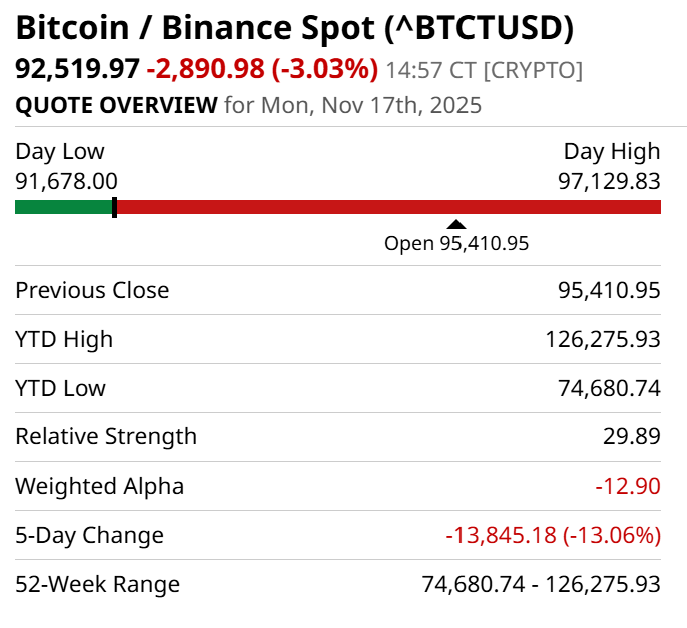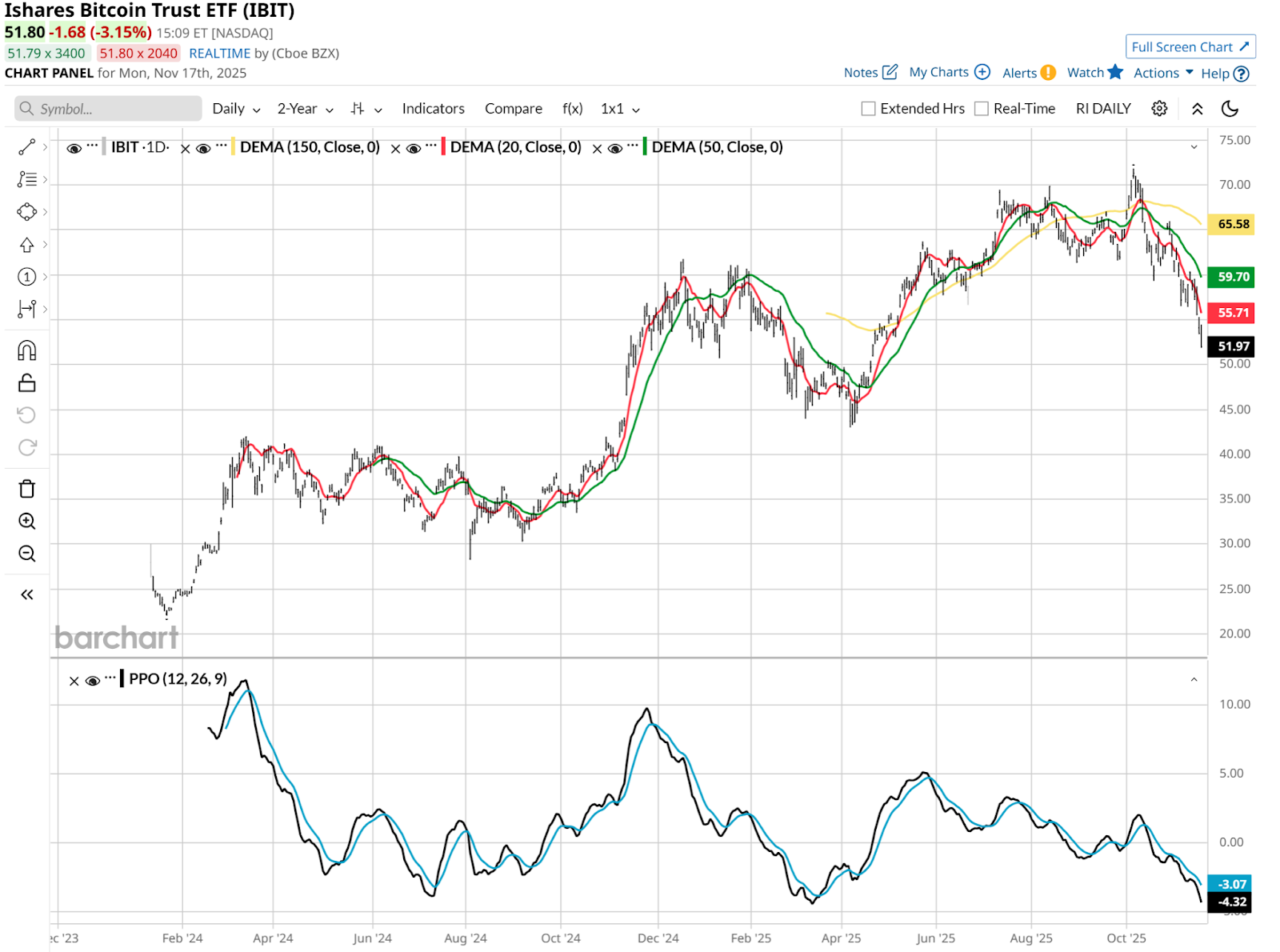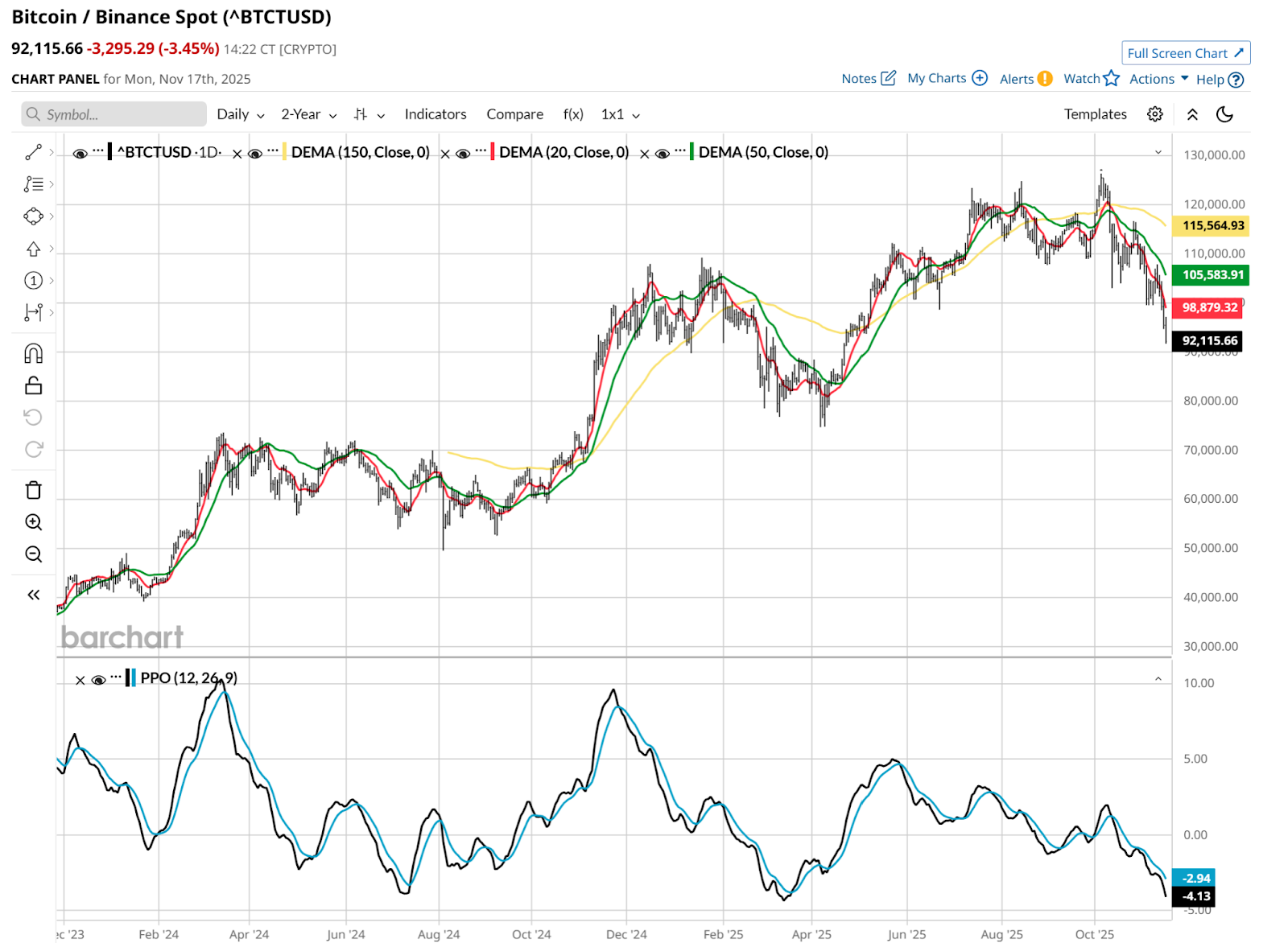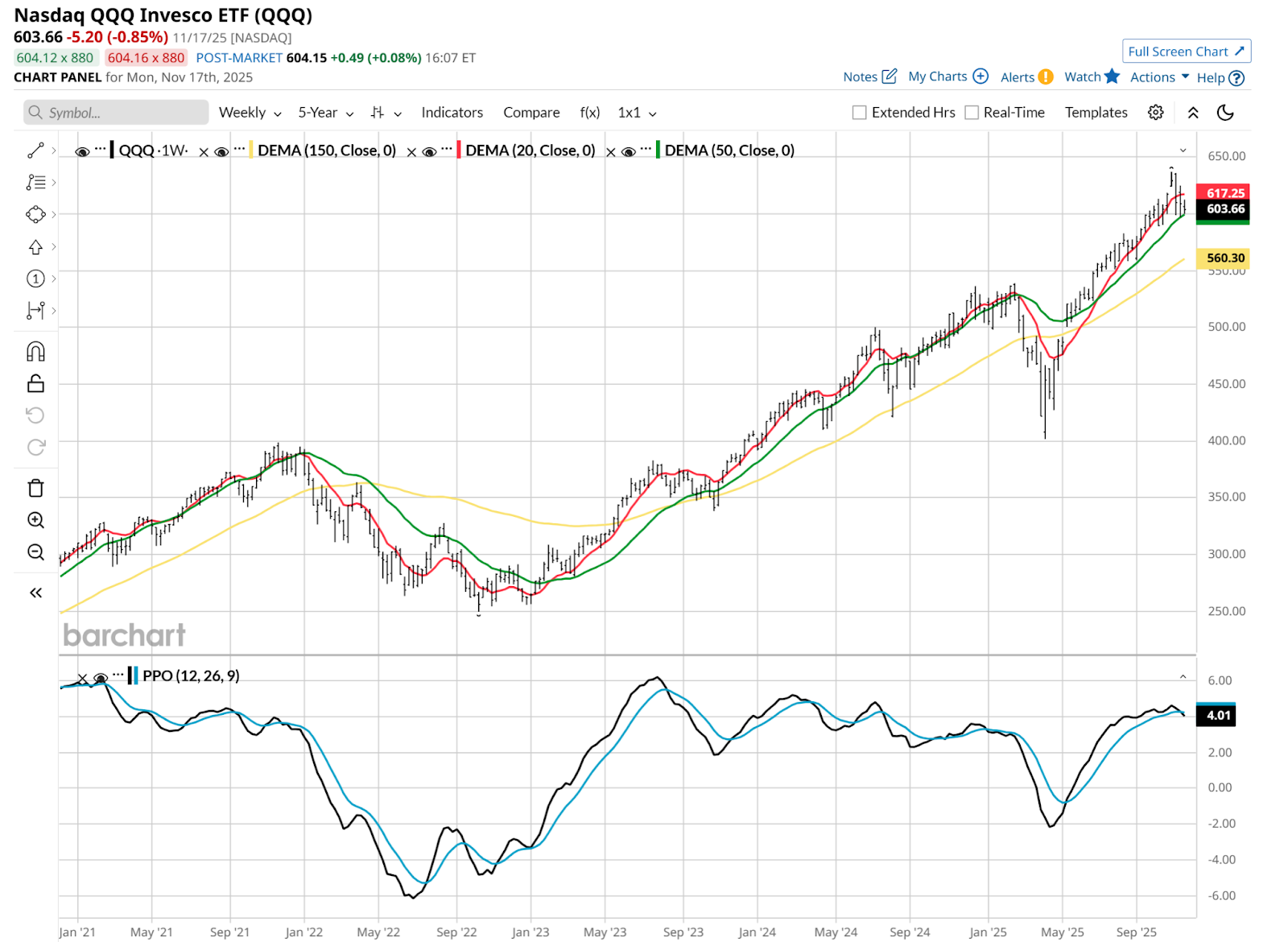For Bitcoin (BTCUSD) and other cryptocurrencies, it’s beginning to look a lot like Christmas. At least, in terms of wintry cold temperatures.
After reaching a high water mark of more than $126,000 as recently as Oct. 6, it has given back more than 30% of that peak value. Crypto fans are used to this, and each decline of this magnitude has turned out to be another buying opportunity

For Bitcoin, Is This Time Different?
A set of charts I analyzed indicates there’s a good chance we’ll see a “crypto winter,” where Bitcoin suffers further price damage. And just as during cold and flu season, when Bitcoin sneezes, other cryptocurrencies catch a cold and fall in price too.
This is part of a market climate that every week looks more like one big trade to me. Allow me to explain.
If we look at Bitcoin in isolation, via the iShares Bitcoin Trust ETF (IBIT), we can see the recent drawdown. This has erased all of its gains since April. And the path of least resistance continues to be down, based on both the upper and lower parts of this daily price chart. The upper part indicates that the $45 level is the next logical support area for IBIT, now that it failed around the $60 level.

The Percentage Price Oscillator (PPO) indicator at bottom shows IBIT at the low end of its range. However, IBIT has only traded since the start of last year. That’s why below, I present a longer-term chart of Bitcoin’s spot price, which IBIT and many other ETFs are based on.
This chart confirms that of IBIT’s, in that it is in an area where a near-term bottom could occur. However, the weight of the evidence still favors continued weakness.

What Will Ethereum’s Price Do Next?
Then there’s Ethereum (ETHUSD), the closest thing Bitcoin has to a vice president. It fell below the $3,000 mark on Monday, for the first time since July.
Using the iShares Ethereum Trust ETF (ETHA), here’s a look at how that digital currency is faring. We know it is down, but is it nearing a point where a bottom of some significance could be close?

That chart of ETHA above tells a similar story to that of its sister ETF, IBIT. There’s still room to run downward, as the PPO indicator is still only about two-thirds of the way down to its prior trough around -10.00. This “bears” watching.
Because if you are a crypto bull, even for the short term, Ethereum is less liquid than Bitcoin, and tends to move with more volatility in either direction. So the next bounce likely produces a higher-octane percentage move up in ETHA than IBIT. That’s been the unofficial rule for a while now. While Ethereum may have more practical commercial uses than Bitcoin, the latter has so much name recognition, it continues to be where the biggest asset flows occur.
And that’s the problem creating an overhang for crypto’s outlook. There’s a good chance that a lot of investment in this space is leveraged. That has produced some breathtaking up moves, but the boomerang effect is just as powerful.
Is Bitcoin’s Price Determined by QQQ?
Not directly. But it is hard to ignore the high correlation between IBIT and the Invesco Nasdaq QQQ ETF (QQQ). And, it seems to get stronger by the day. There was a time when Bitcoin performed like it had a mind of its own.
But there are a lot more players in the crypto market now. Institutional interest and subsequent inflows were lauded as a great sign that Bitcoin and its peers were not only accepted, but well on their way to being THE investment opportunity going forward.

And that may still turn out to be the case. But what if QQQ breaks down? Will Bitcoin, Ethereum, and the rest be able to move independently? A couple of years ago, this was an easy call. The answer was yes.
How to Profit When Bitcoin’s Price Falls
In the same way we used to joke about how “there’s an app for everything,” so too has that become the case for ETFs. So if Bitcoin and Ethereum fall in price, do traders just hope for the next rally to come around? They can, but they can also profit from a price drop in crypto.
Here is a quick comparison between IBIT and a 2x inverse Bitcoin ETF, as well as ETHA and a 1x inverse Ethereum ETF. Using Barchart’s ETF Screener, it is easy to find what you are looking for.

And if you’re looking for more ways to play your view on cryptocurrency using ETFs, there are expanded choices. That may come in handy.
A lot has changed, and the market cycle is far more advanced. And potentially turning in a way that won’t make buying the dip as automatic as it was. That’s where crypto could see winter come. Maybe soon.
Rob Isbitts, founder of Sungarden Investment Publishing, is a semi-retired chief investment officer, whose current research is found here at Barchart, as well as at his ETF Yourself subscription service on Substack.
On the date of publication, Rob Isbitts did not have (either directly or indirectly) positions in any of the securities mentioned in this article. All information and data in this article is solely for informational purposes. For more information please view the Barchart Disclosure Policy here.
More news from Barchart
- Is a Crypto Winter Starting Now? These 3 ETF Indicators Say ‘Yes.’
- Small-Cap Stocks Are Sounding a Very Scary Alarm. Here’s How to Protect Yourself… and Even Profit.
- Think AI Stocks Are Overvalued? Invest in These Data Center Power Trades for the Next Growth Phase.
- Where Will the Bleeding End for Bitcoin Bulls? Our Top Chart Strategist Maps Out BTC’s Next Move.






